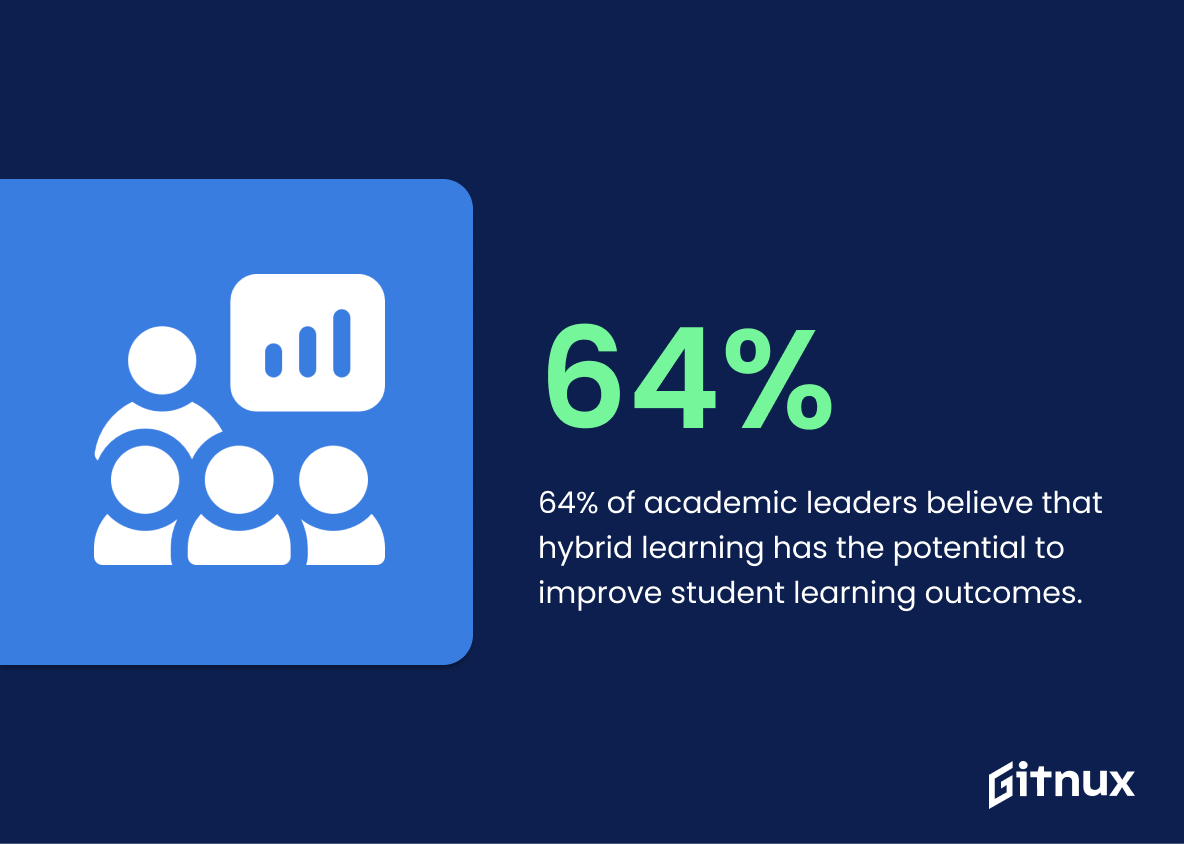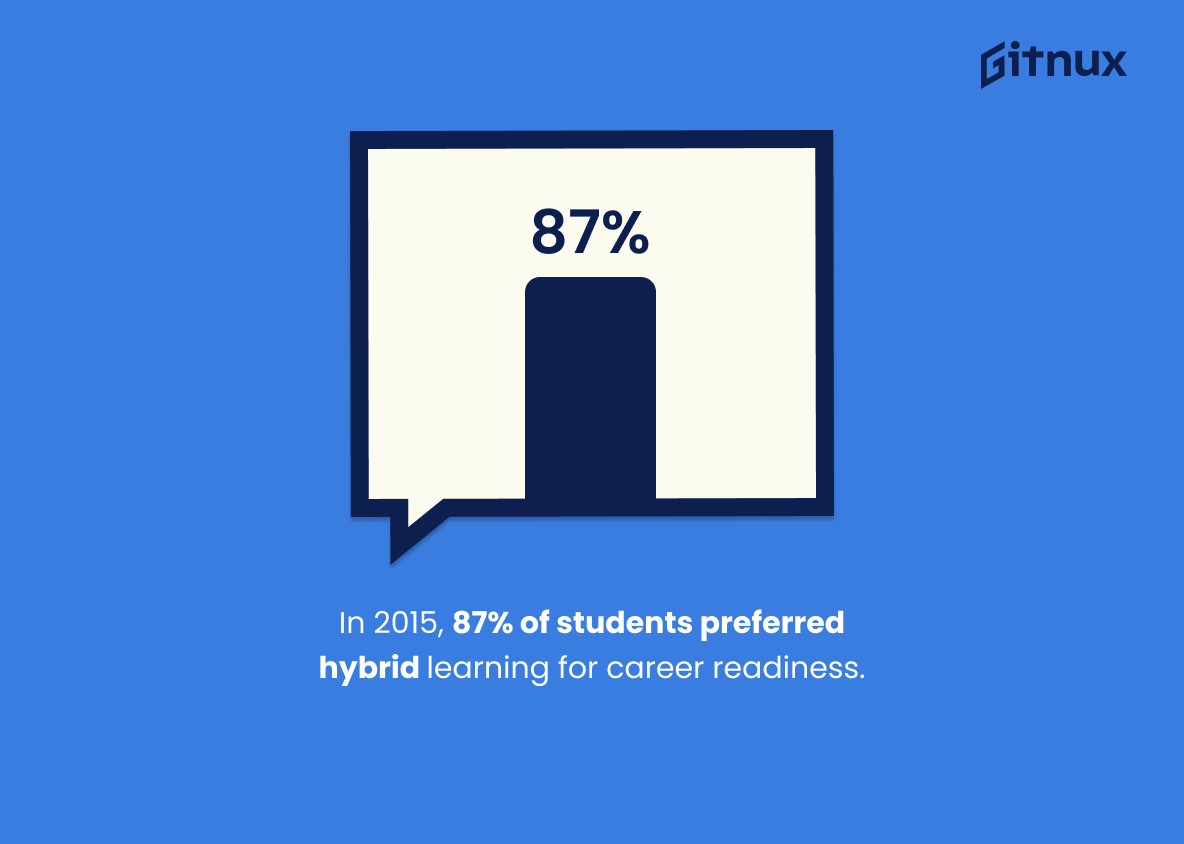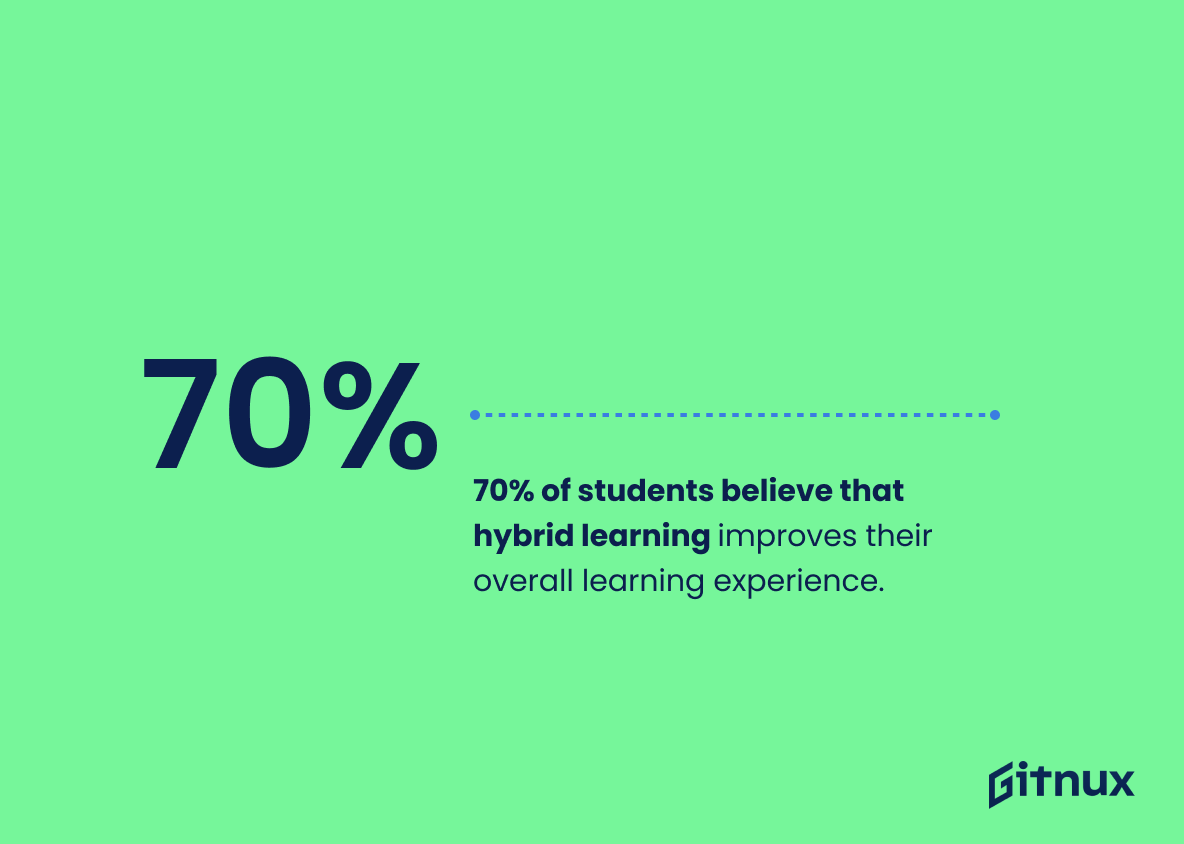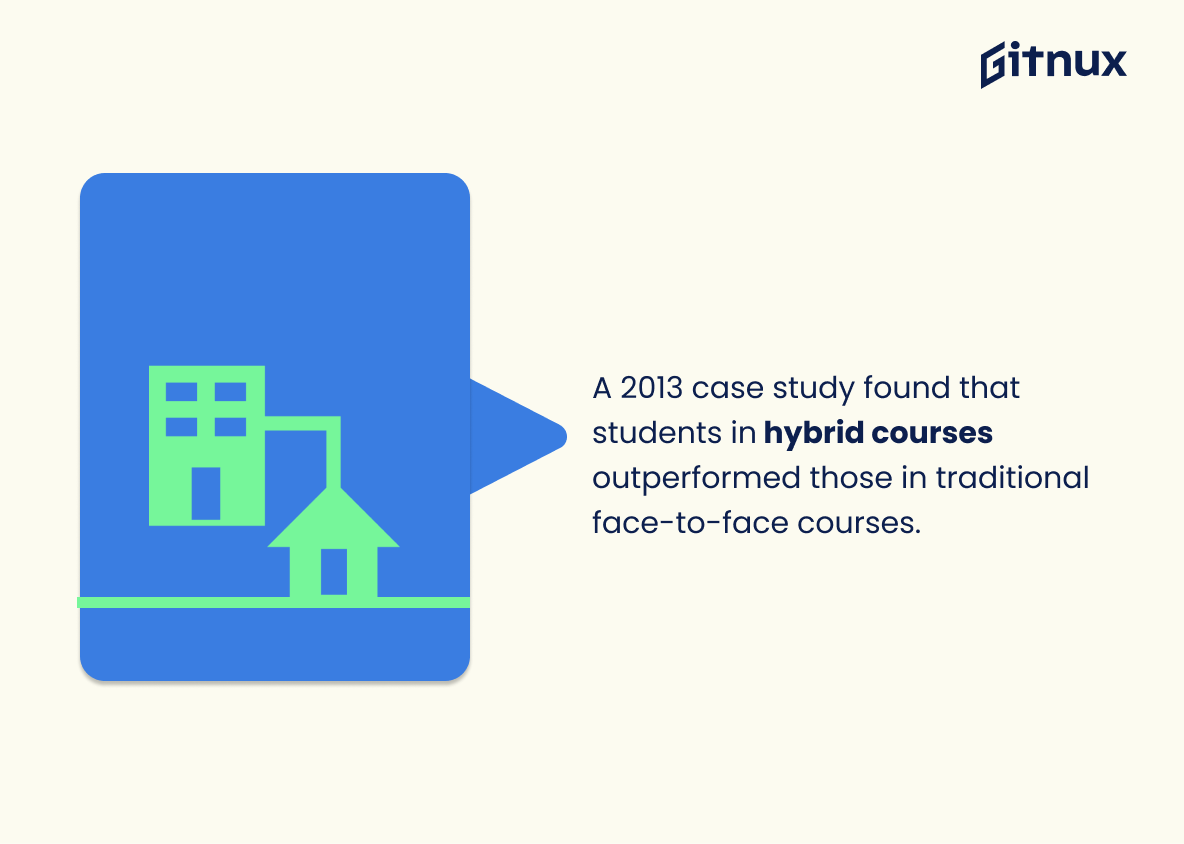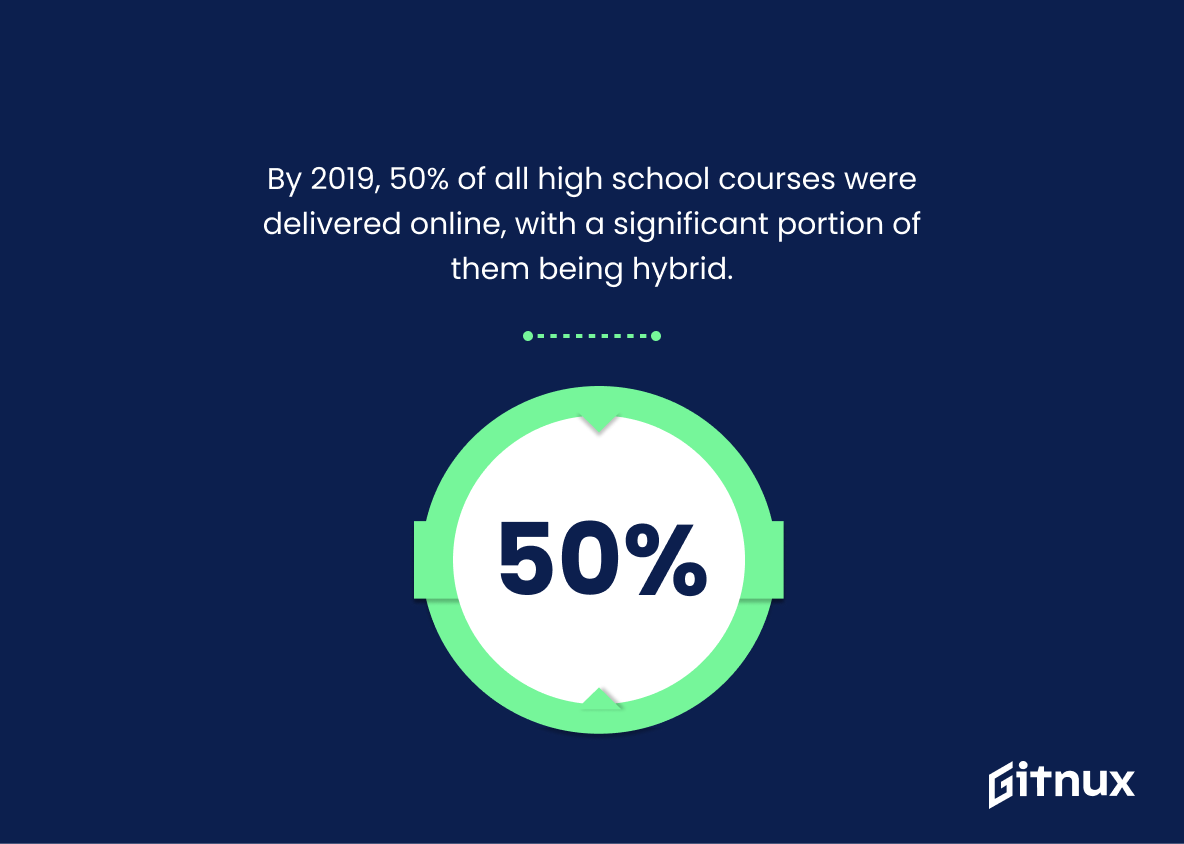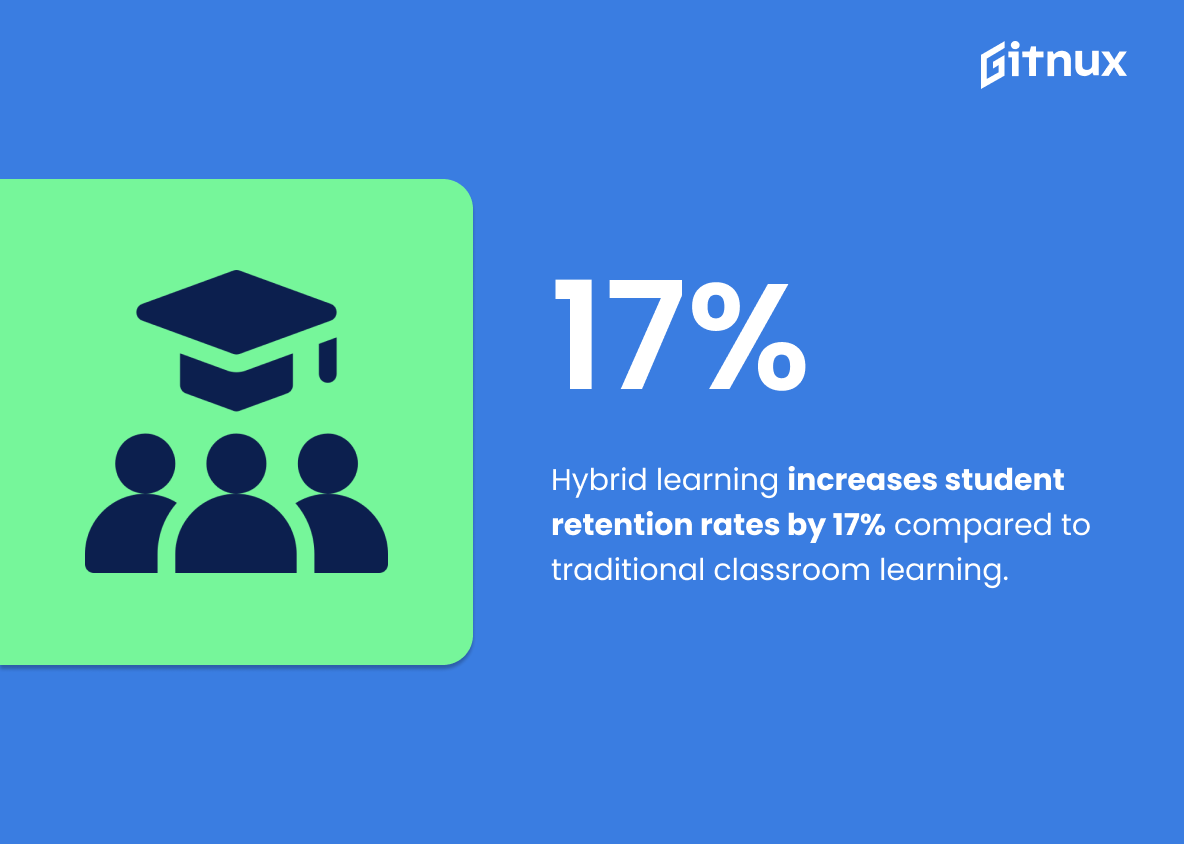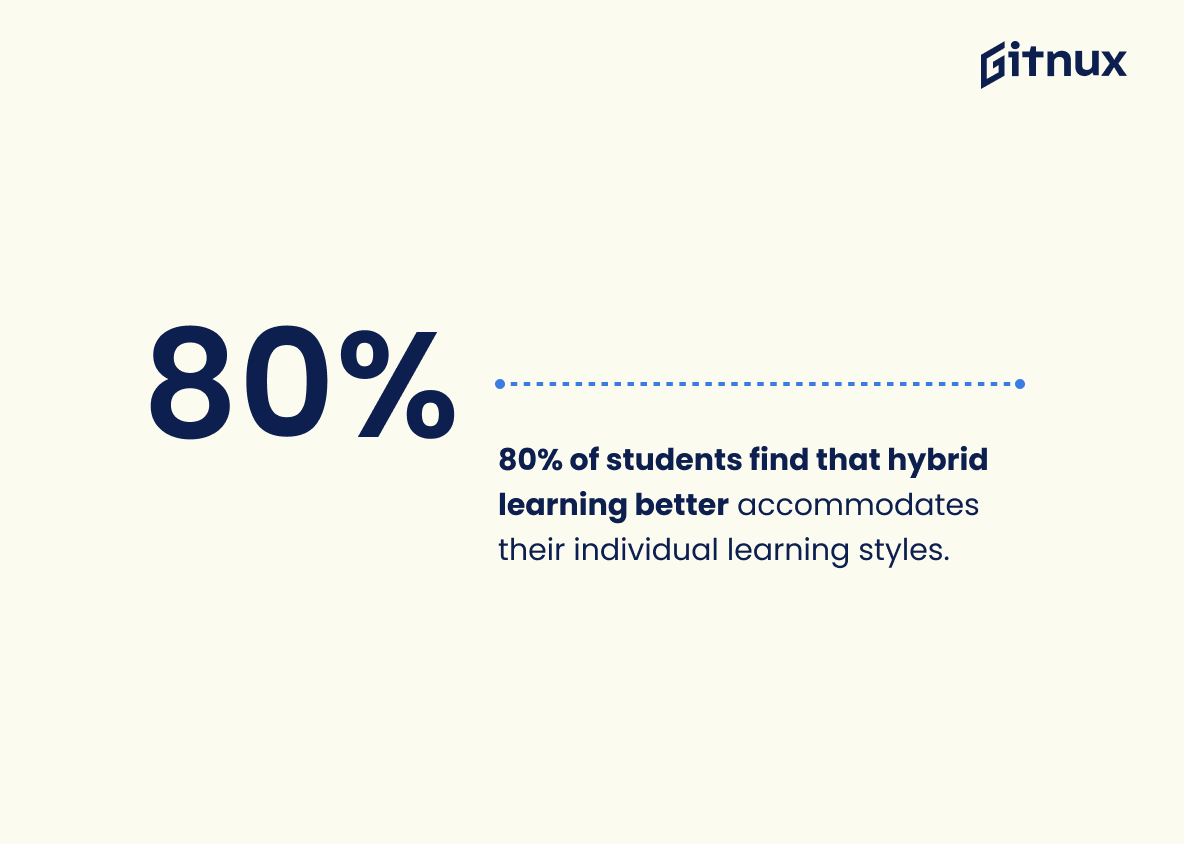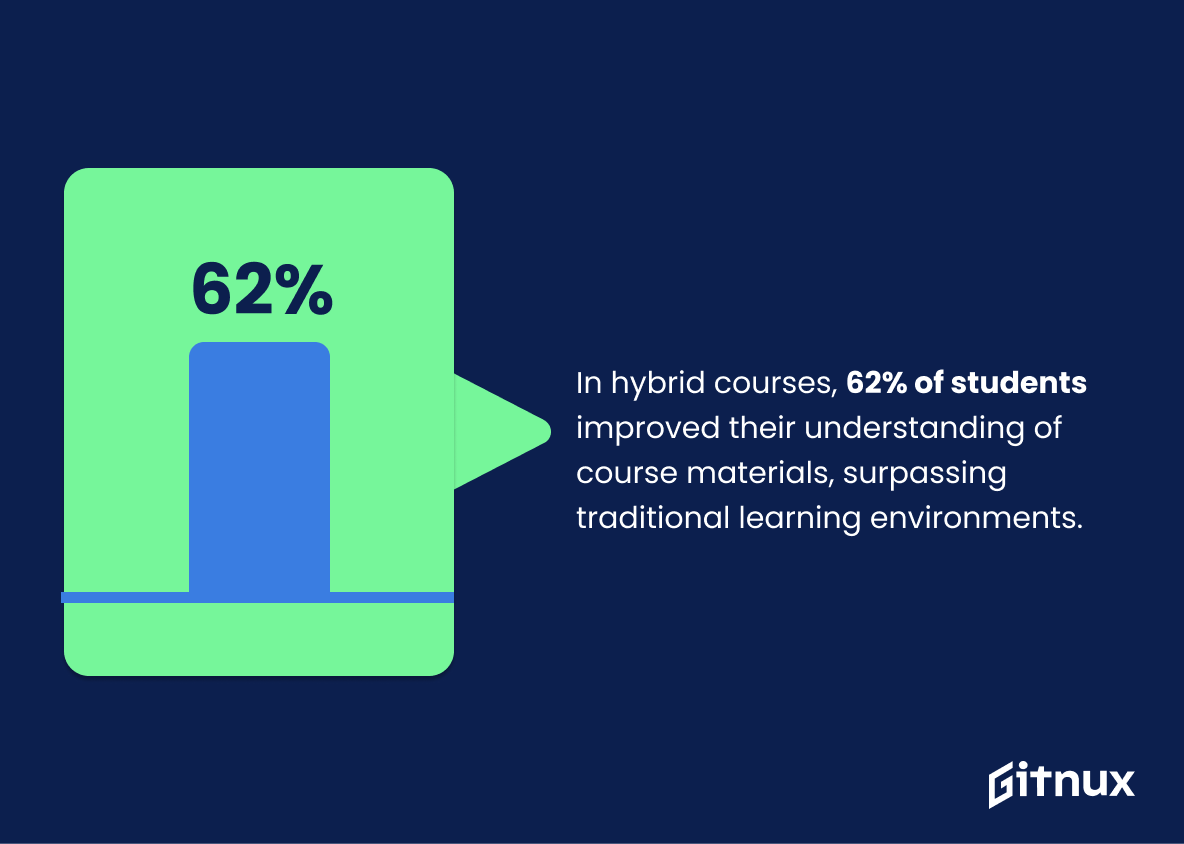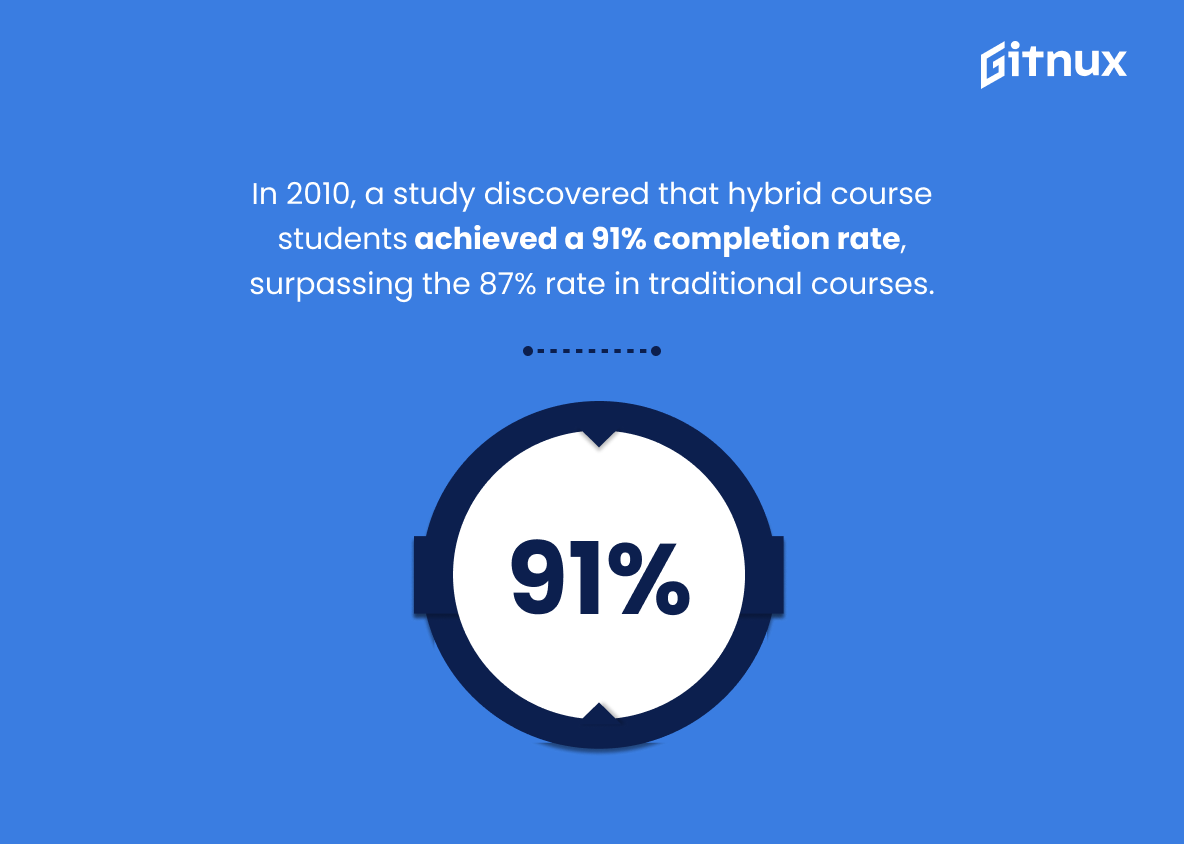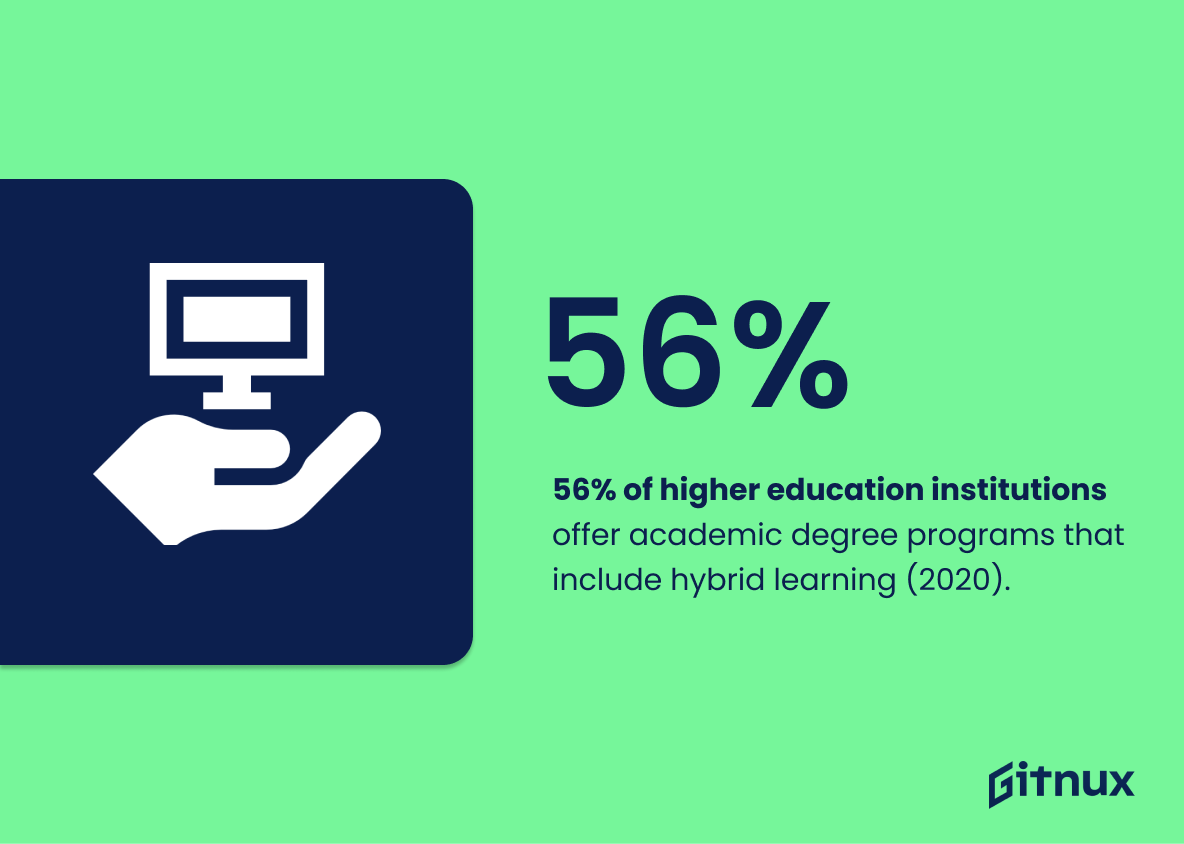Hybrid learning is an increasingly popular educational model that combines traditional face-to-face instruction with online components. This type of learning has been found to have numerous benefits, including increased student engagement and improved student outcomes. In this blog post, we will explore the statistics behind hybrid learning models and how they can benefit students in both academic and career settings.
We’ll look at data from various studies on topics such as student engagement rates, failure rates, completion rates, environmental impact reduction, faculty opinions about technology use in education, and more. By understanding these facts about hybrid learning models we can gain a better appreciation for their potential to improve our educational systems around the world.
This statistic is a powerful testament to the effectiveness of hybrid learning models. It demonstrates that hybrid learning can be a powerful tool for increasing student engagement, providing a significant boost to the learning experience. This is especially important in the context of a blog post about hybrid learning statistics, as it provides a tangible example of the potential benefits of this approach.
The hybrid learning approach reduces failure rates by 20%.
This statistic is a powerful testament to the effectiveness of hybrid learning. It shows that by combining traditional classroom instruction with online learning, failure rates can be significantly reduced. This is an important finding for educators, administrators, and parents alike, as it demonstrates that hybrid learning can be an effective way to ensure students are successful in their studies.
Hybrid Learning Statistics Overview
64% of academic leaders believe that hybrid learning has the potential to improve student learning outcomes.
This statistic is a powerful indicator of the potential of hybrid learning to positively impact student learning outcomes. It shows that the majority of academic leaders recognize the potential of this approach and are willing to invest in it. This statistic is an important piece of evidence that can be used to support the argument that hybrid learning is an effective way to improve student learning outcomes.
According to a 2015 survey, 87% of students agreed that hybrid learning prepares them better for their careers than traditional learning formats.
This statistic is a powerful testament to the effectiveness of hybrid learning in preparing students for their future careers. It shows that the majority of students recognize the value of this type of learning and are confident that it will give them the skills and knowledge they need to succeed. This statistic is an important piece of evidence that should be included in any blog post about hybrid learning statistics.
70% of students believe that hybrid learning improves their overall learning experience.
This statistic is a powerful indicator of the success of hybrid learning. It shows that the majority of students are finding that this type of learning is beneficial to their overall learning experience. This statistic is important to include in a blog post about Hybrid Learning Statistics because it demonstrates the positive impact that hybrid learning can have on students.
In a 2013 case study, students who took hybrid courses performed significantly better than their peers who took only traditional face-to-face courses.
This statistic is a powerful testament to the effectiveness of hybrid courses. It shows that students who take hybrid courses are more likely to perform better than those who take only traditional face-to-face courses. This is an important point to make in a blog post about Hybrid Learning Statistics, as it demonstrates the potential of hybrid courses to improve student performance.
By 2019, 50% of all high school courses were delivered online, with a significant portion of them being hybrid.
This statistic is a testament to the growing popularity of hybrid learning. It shows that more and more high school courses are being delivered online, with a significant portion of them being hybrid. This indicates that hybrid learning is becoming an increasingly viable option for students and educators alike, as it offers the flexibility of online learning with the support of in-person instruction.
Hybrid learning increases student retention rates by 17% compared to traditional classroom learning.
This statistic is a powerful testament to the effectiveness of hybrid learning. It demonstrates that students are more likely to stay engaged and retain information when they are able to learn in a hybrid environment. This is an important statistic to consider when discussing the benefits of hybrid learning, as it shows that it can have a positive impact on student retention rates.
Approximately 85% of faculty agree that using technology in a hybrid learning environment enhances students’ ability to learn.
This statistic is a powerful testament to the effectiveness of hybrid learning. It shows that the majority of faculty recognize the potential of technology to improve student learning outcomes. This statistic is an important reminder that hybrid learning is a viable option for educators looking to maximize student engagement and success.
80% of students find that hybrid learning better accommodates their individual learning styles.
This statistic is a powerful testament to the effectiveness of hybrid learning in providing students with an educational experience that is tailored to their individual learning styles. It demonstrates that hybrid learning is an effective way to ensure that students are able to learn in a way that best suits them, and that it is a viable option for those looking for an alternative to traditional learning methods.
62% of students in hybrid courses experienced an increase in their understanding of course materials compared to those in traditional learning environments.
This statistic is a testament to the effectiveness of hybrid learning environments. It demonstrates that students in hybrid courses are more likely to gain a better understanding of course materials than those in traditional learning environments. This is an important point to consider when discussing the merits of hybrid learning, as it shows that it can be a viable and beneficial alternative to traditional learning.
A 2010 study found that students who participated in hybrid courses had a higher completion rate of 91% compared to 87% for students in traditional courses.
This statistic is significant in the context of hybrid learning statistics because it demonstrates the effectiveness of hybrid courses in helping students complete their studies. The higher completion rate of 91% compared to 87% for students in traditional courses shows that hybrid courses are more successful in helping students reach their educational goals. This is an important finding that should be taken into consideration when evaluating the effectiveness of hybrid learning.
56% of higher education institutions offer academic degree programs that include hybrid learning (2020).
This statistic is a testament to the growing popularity of hybrid learning in higher education. It shows that more and more institutions are recognizing the potential of this type of learning and are investing in it. This statistic is a clear indication that hybrid learning is becoming an increasingly accepted and sought-after form of education.
The global K-12 hybrid learning market is expected to grow at a CAGR of 5.29% from 2021 to 2026.
This statistic is a testament to the increasing popularity of hybrid learning, which is expected to continue to grow in the coming years. It highlights the potential of hybrid learning to become a major player in the K-12 education market, and provides an indication of the potential for growth in the sector. As such, it is an important statistic to consider when discussing the current and future state of hybrid learning.
Conclusion
The statistics presented in this blog post demonstrate the effectiveness of hybrid learning models. From increased student engagement and reduced failure rates to improved student learning outcomes, higher completion rates, and better overall learning experiences for students, it is clear that hybrid courses offer a number of advantages over traditional classroom settings. Furthermore, with more institutions offering academic degree programs that include hybrid elements and the global K-12 market expected to grow at a CAGR of 5.29%, it appears that this trend will continue into the future.
References
0. – https://www.surveygizmo.com
1. – https://www.edtechmagazine.com
2. – https://www.usergeneratededucation.wordpress.com
3. – https://www.elearningindustry.com
4. – https://www.globenewswire.com
5. – https://www.campustechnology.com
6. – https://www.onlinelearningconsortium.org
7. – https://www.bloomberg.com
8. – https://www.files.eric.ed.gov
9. – https://www.ijstr.org
10. – https://www.evolllution.com
11. – https://www.cisco.com
12. – https://www.insidehighered.com
13. – https://www.christenseninstitute.org
ZipDo, cited June 2023: Hybrid Learning Statistics
